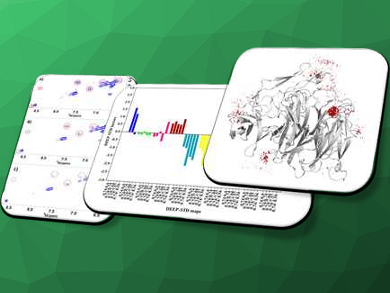DEEP-STD (differential epitope mapping-saturation transfer difference) NMR spectroscopy could be used to gain information about the orientation of ligands in weak complexes with proteins. The determination of 3D structures of weak protein-ligand complexes is difficult to achieve by other biophysical means. However, a difficulty of this NMR technique is the need of chemical-shift assignments for protein protons, so that specific protons in the binding pocket can be targeted at specific frequencies.
Jesus Angulo, University of East Anglia, Norwich, UK, and colleagues have developed a simple protocol to experimentally identify protein NMR resonances in the binding pocket without carrying out a complete process of assignment. The researchers compared 2D 1H,1H TOCSY (TOtal Correlated SpectroscopY) experiments of protein samples with and without a paramagnetic probe such as 4‐hydroxy‐2,2,6,6‐tetramethylpiperidin‐1‐oxyl (TEMPOL). This allowed them to identify “hot spots” on the surface of the protein.
A ligand-binding hot spot is a site on the surface of the protein that has a high probability for interaction with a ligand. The paramagnetic probe interacts with these hot spots and causes a paramagnetic relaxation enhancement (PRE) effect. This decreases the intensity of specific protein TOCSY crosspeaks compared with the spectrum recorded without the paramagnetic probe. The signals which have a lower intensity in the spectrum recorded in the presence of paramagnetic probe, thus, correspond to residues that interact with ligands.
Overall, the team developed a simple NMR protocol to expand the DEEP-STD NMR approach and increase the applicability of the technique. The obtained information on the orientation of the ligand in the binding pocket of the protein opens several interesting applications of the DEEP‐STD NMR methodology
- Deriving Ligand Orientation in Weak Protein–Ligand Complexes by DEEP-STD NMR Spectroscopy in the Absence of Protein Chemical-Shift Assignment,
Ridvan Nepravishta, Samuel Walpole, Louise Tailford, Nathalie Juge, Jesus Angulo,
ChemBioChem 2018.
https://doi.org/10.1002/cbic.201800568




